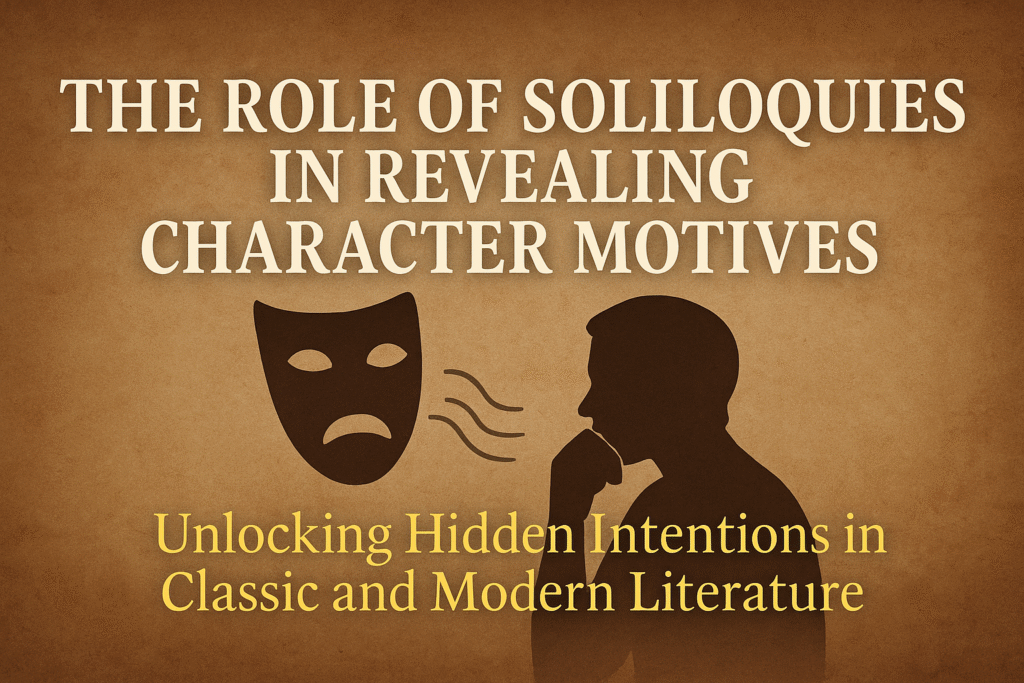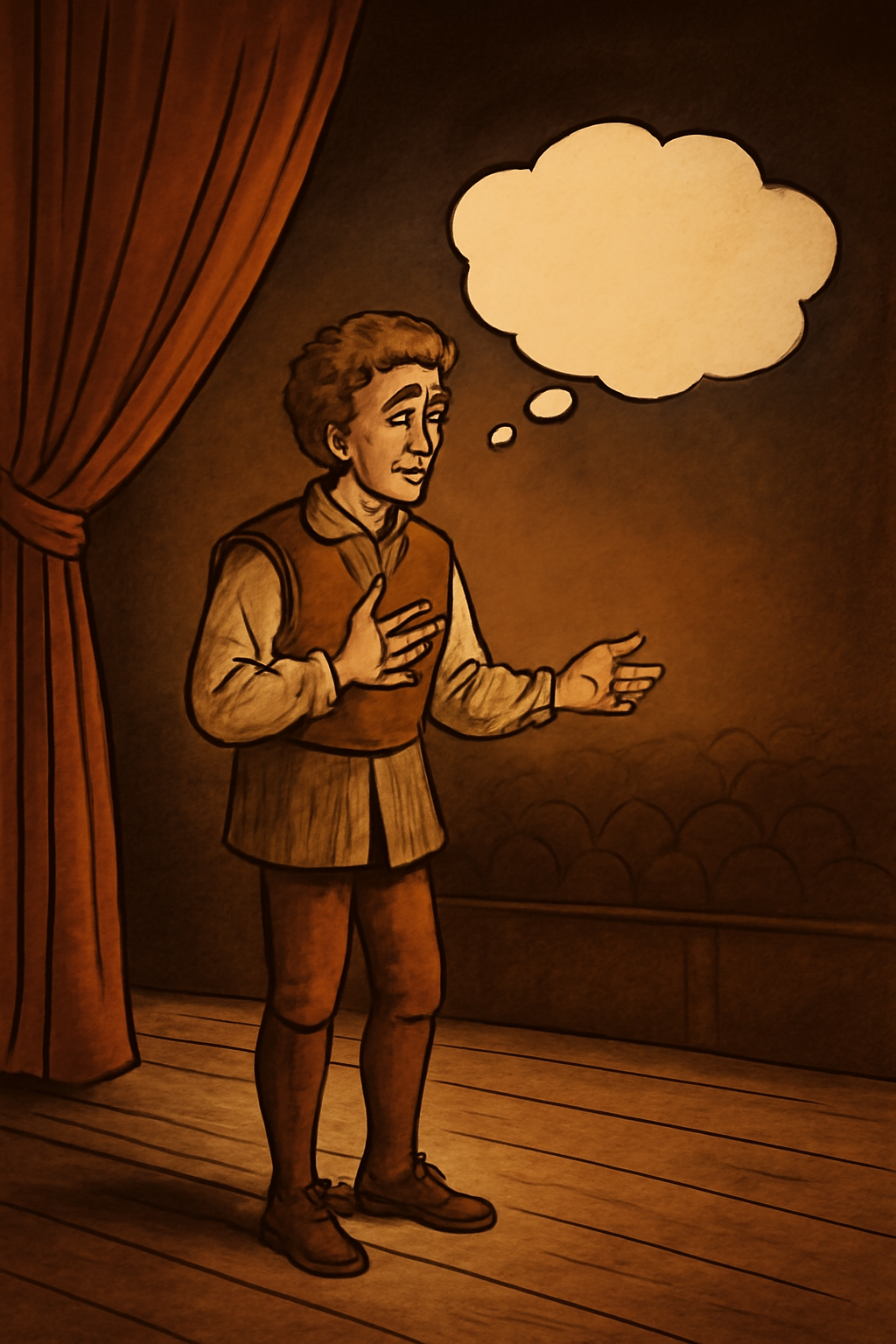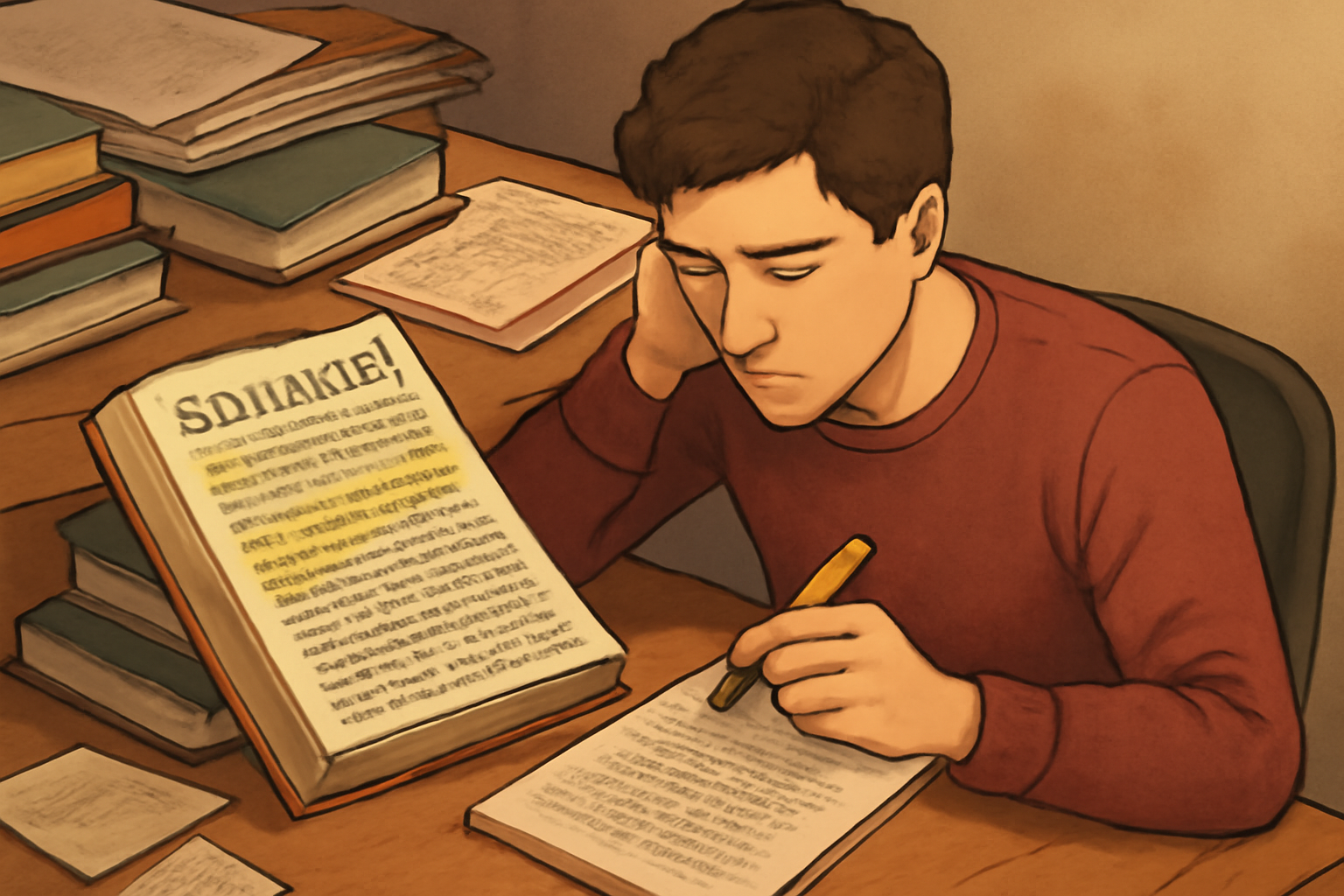
The Role of Soliloquies in Revealing Character Motives: Unlocking Hidden Intentions in Classic and Modern Literature
Ever wondered what your favorite characters are truly thinking when no one else is around? 
But why does this matter? Many students and readers struggle to understand why a character acts a certain way. The role of soliloquies in revealing character motives provide the missing puzzle piece, exposing hidden emotions and moral dilemmas that drive the story forward. In this article, we’ll break down how soliloquies work, why they matter in both classic and modern texts, and how you can analyze them like a pro. Stick around—you’re about to unlock a whole new layer of meaning behind your favorite literary moments.
Table of Contents
Toggle1. What Is a Soliloquy? (Beginner-Friendly Guide)

Let’s start simple: a soliloquy is when a character speaks their thoughts out loud, alone on stage or in a private moment, revealing what they truly think or feel. Unlike dialogue, no one else is supposed to hear it—just the audience. It’s like reading their mind, in real time.
Key Features of a Soliloquy:
- Spoken alone, not to another character
- Meant to reveal inner thoughts and emotions
- Often used during moments of conflict, decision, or reflection
- Helps the audience understand the character’s true motive or mindset
Why Authors Use Soliloquies:
- To expose the truth behind a character’s actions
- To build tension or dramatic irony (the audience knows something others don’t)
- To give emotional depth to the story
- To advance the plot by showing internal conflict or plans
Pro Tip for Students & Readers:
2. How Soliloquies Reveal Character Motives
Ever felt confused about why a character made a certain choice? The role of soliloquies in revealing character motives often hold the answer. These private speeches strip away the masks characters wear in front of others, giving us honest access to their true desires, fears, and intentions.
Let’s break down how the role of soliloquies in revealing character motives help us understand a character’s motives—step by step.
Expressing Inner Conflict
Characters often use the role of soliloquies in revealing character motives when they’re torn between choices. These moments of emotional struggle reveal what really matters to them.
Example: In Hamlet, when he asks, “To be or not to be…,” he’s wrestling with life and death—not for show, but from deep personal pain.

Justifying Actions (or Inaction)
Sometimes characters explain themselves through soliloquies—why they did something, or why they didn’t.
Example: In Macbeth, he talks himself into murdering King Duncan, revealing ambition, guilt, and fear—all at once.

Revealing Desires and Fears
Soliloquies are windows into a character’s heart. Through them, we learn what the character wants most—and what they’re afraid to lose.
Example: In Death of a Salesman, Willy Loman’s reflections show his desperate longing for success and validation.

Creating Dramatic Irony
Soliloquies tell the audience something the other characters don’t know, giving us a behind-the-scenes advantage.
Example: A villain might confess their evil plan in a soliloquy—something the hero remains clueless about.

Final Takeaway:
Soliloquies are not just speeches—they’re secrets. They help you, the reader, see past the surface and connect with characters on a deeper level. When you analyze them, you unlock hidden truths that make the story richer, clearer, and more powerful.
Keep these techniques in mind the next time you come across a soliloquy—it’s often the key to understanding the whole plot.
3. Famous Soliloquies That Unveil Motives (With Examples)

Some of the most powerful moments in literature happen when characters speak their minds—alone and unfiltered. These famous soliloquies not only reveal their deepest motives but also give readers incredible insight into the emotional and psychological struggles driving their actions. Let’s look at a few unforgettable examples.
Hamlet by William Shakespeare

Soliloquy: “To be, or not to be: that is the question…”
- What it reveals: Hamlet’s deep inner conflict about life, death, and the meaning of existence.
- Motive: He’s contemplating whether to endure suffering or end it all—showing us his despair and moral confusion.
This soliloquy is a masterclass in revealing a character’s emotional paralysis and philosophical struggle.
Macbeth by William Shakespeare
Soliloquy: “Is this a dagger which I see before me…”
- What it reveals: Macbeth’s psychological breakdown as he prepares to kill King Duncan.
- Motive: Ambition and fear. He’s trying to convince himself that murder is justified, exposing his internal torment.
This speech exposes how guilt and ambition clash inside the mind of a character about to make a life-changing decision.
Death of a Salesman by Arthur Miller
Soliloquy: Willy Loman talking to himself in the kitchen or garden
- What it reveals: His desperate need to feel successful and leave a legacy.
- Motive: Validation. Willy’s internal dialogue shows how much he ties his self-worth to money and status.
Modern soliloquies like this are subtler but just as revealing—they uncover personal fears beneath everyday moments.
The Glass Menagerie by Tennessee Williams
Soliloquy: Tom’s final speech to the audience
- What it reveals: His guilt and longing after abandoning his family.
- Motive: Escape vs. responsibility. He wanted freedom but is haunted by the consequences.
A perfect example of a soliloquy used for reflection and emotional closure.
Why These Matter:
Each of these soliloquies cracks open the character’s mind and lets us in. Whether it’s about ambition, fear, guilt, or dreams, soliloquies connect us to the “why” behind a character’s every action. That’s what makes them such powerful storytelling tools—and gold for anyone analyzing literature.
4. Soliloquies as a Tool for Literary Analysis (For Students)

If you’re a student analyzing literature, soliloquies are your secret weapon. 
 Why Soliloquies Matter in Literary Analysis
Why Soliloquies Matter in Literary Analysis
Soliloquies give you:
- Direct access to a character’s thoughts
- Clues about themes, like ambition, fear, guilt, or identity
- Insight into turning points in the story
Think of them as emotional blueprints—showing you what’s driving the plot from the inside out.
 What to Look for When Analyzing a Soliloquy
What to Look for When Analyzing a Soliloquy
Here are 3 practical steps you can apply right away:
- Identify the motive
Ask: What does the character want? What’s holding them back? - Notice the tone and language
- Are they anxious, hopeful, angry, or sad?
- Look for metaphors, repetition, or rhetorical questions—they reveal deeper emotions.
- Connect to the plot
- Does this soliloquy explain an upcoming action?
- How does it change the way you see the character?
Sample PEEL Paragraph (Perfect for Essays)
Point: In Hamlet, Shakespeare uses soliloquy to show Hamlet’s emotional turmoil.
Evidence: In the “To be or not to be” soliloquy, Hamlet questions the value of life.
Explain: This moment reveals his suicidal thoughts and inner conflict about revenge.
Link: It shows Hamlet’s hesitation, helping the audience understand his delayed action.

 Bonus Tip:
Bonus Tip:
If you’re preparing for exams or writing essays, highlight key soliloquies in your text. Practice breaking them down using the steps above. It makes revision way easier—and more effective!

Soliloquies aren’t just dramatic moments—they’re powerful tools for literary insight. Once you learn to analyze them, you’ll never read a character the same way again.
5. How Soliloquies Build Emotional Connection with Readers

One of the most powerful effects of soliloquies is their ability to create an emotional bond between the audience and the character. When a character speaks their thoughts out loud—vulnerable, raw, and unfiltered—we’re not just reading fiction anymore. We’re feeling it.
 1. Private Thoughts Create Intimacy
1. Private Thoughts Create Intimacy

Soliloquies feel like personal confessions.
- We hear what no one else in the story can.
- It’s like the character is trusting us with their secrets.

2. We Know More Than the Other Characters
This creates dramatic irony—a storytelling technique where the audience knows something others don’t.
- We understand the character’s real motives, even if they’re pretending in front of others.
- This deeper insight builds empathy and curiosity.
Example: When Macbeth fakes loyalty but reveals ambition in his soliloquies, we feel the tension before the plot explodes.
3. Shared Emotions = Shared Experience
Whether it’s Hamlet’s despair, Willy Loman’s regret, or Tom’s guilt in The Glass Menagerie, soliloquies mirror real human emotions.
- Readers relate to fear, indecision, or dreams—because we’ve all felt them.
- That shared emotional ground builds a stronger connection between character and reader.
4. Emotional Engagement Keeps Readers Hooked
Characters become more than names—they feel real.
When we know what’s going on inside their heads, we care more about what happens next. That’s storytelling that sticks.

 Soliloquies don’t just explain the plot—they make us feel it. They turn reading into an experience by building an emotional bridge between the audience and the character. And once that connection is made, we’re no longer just observers—we’re part of the journey.
Soliloquies don’t just explain the plot—they make us feel it. They turn reading into an experience by building an emotional bridge between the audience and the character. And once that connection is made, we’re no longer just observers—we’re part of the journey.
Frequently Asked Questions (FAQs)
❓1. What is the purpose of a soliloquy in literature?
A soliloquy allows a character to speak their thoughts out loud, usually when they’re alone. It reveals their true feelings, inner conflicts, or intentions that aren’t shared with other characters, helping readers understand what motivates them.
❓2. How do soliloquies help reveal a character’s motive?
Soliloquies give the audience direct access to a character’s unspoken thoughts. These private moments often explain why a character is behaving a certain way, especially when their actions seem unclear in the story.
❓3. What is the difference between a soliloquy and a monologue?
A soliloquy is spoken alone and not meant for others to hear, while a monologue can be directed at other characters. Soliloquies focus on private thoughts; monologues are usually part of a conversation or speech.
❓4. Why are soliloquies important in Shakespeare’s plays?
Shakespeare used soliloquies to reveal the deepest fears, doubts, and ambitions of his characters. Iconic examples like Hamlet’s “To be or not to be” help the audience understand complex emotional struggles that drive the plot.
❓5. Can soliloquies be found in modern literature or films?
Yes, modern works often include soliloquy-like moments through inner monologue, voiceovers, or diary entries. These tools serve the same purpose—letting the audience hear the character’s true thoughts.
❓6. How can I identify a soliloquy in a play or script?
Look for moments where a character speaks alone or to themselves, often without any interaction from others. If the speech reveals personal thoughts or emotions, it’s likely a soliloquy.
❓7. What makes a soliloquy effective?
An effective soliloquy is emotionally honest, reveals internal conflict, and connects with the audience. It should offer new insight into the character’s mindset or decision-making process.
❓8. How can students use soliloquies in literary analysis?
Students can quote soliloquies to explain a character’s motives, emotional state, or transformation. It’s a great way to support arguments in essays and show deeper understanding of the text.











